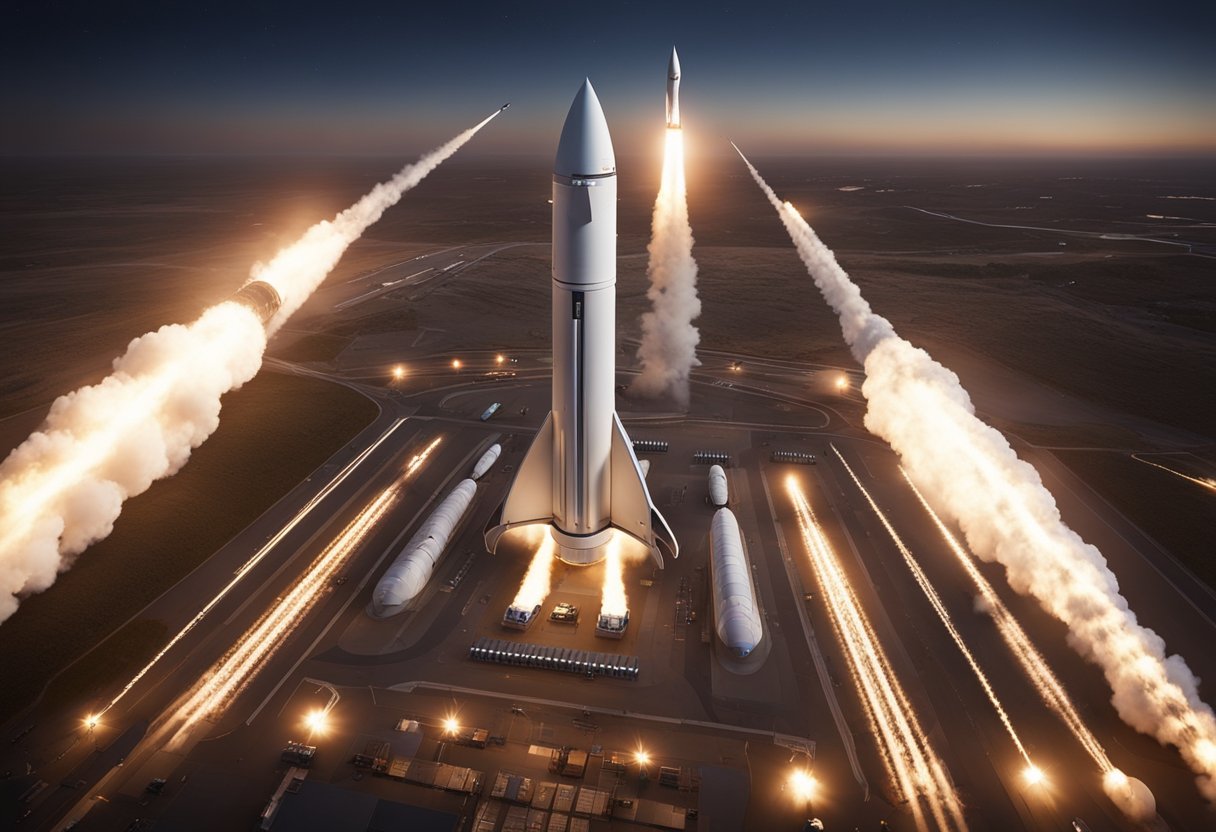
The cosmos, once the exclusive playground for astronauts and cosmonauts, is now opening its gates to a broader audience, thanks to pioneering space tourism companies. As we gaze at the night sky, we’re not just dreamers anymore; we’re potential travellers to the vast expanse above us. The industry is rapidly evolving, with new players entering the fray, ready to offer an array of celestial experiences. Our fascination with space has fuelled the rise of visionary enterprises that promise to turn our extraterrestrial aspirations into reality.
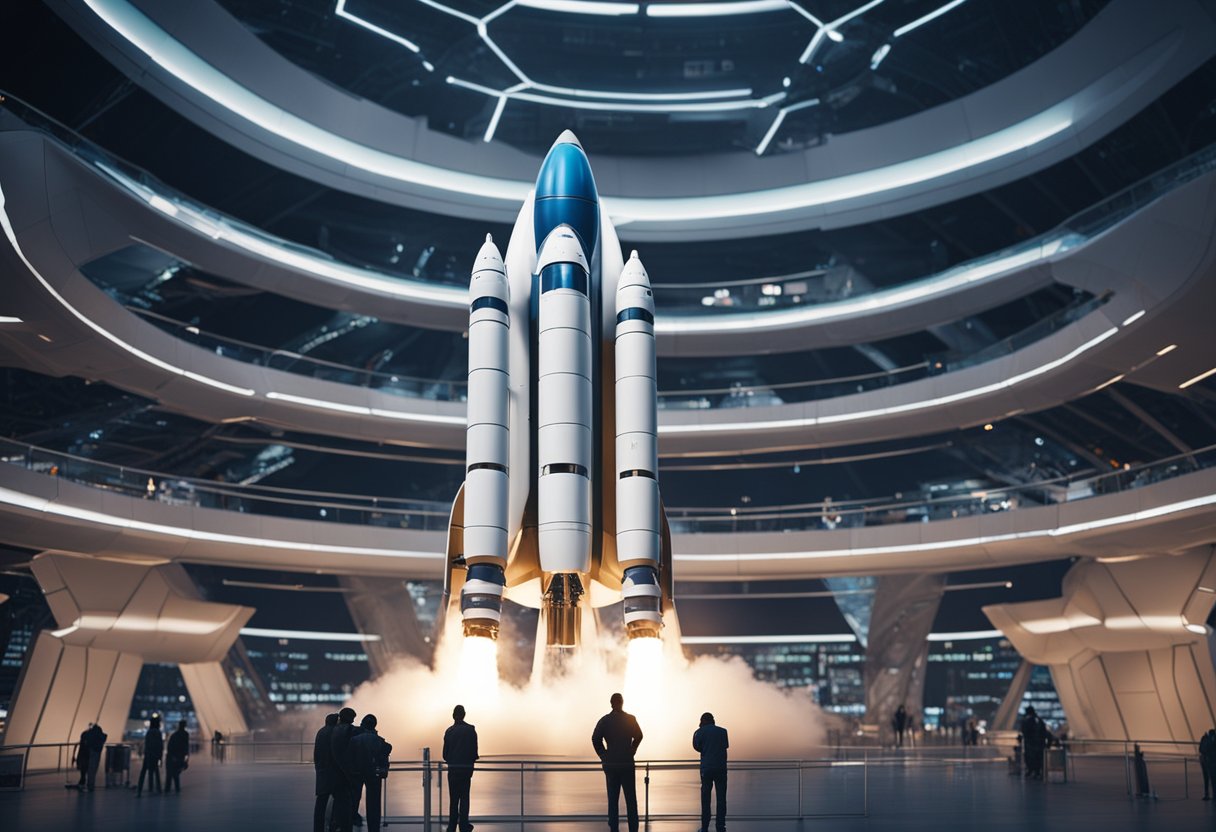
With companies like Blue Origin, Virgin Galactic, and SpaceX, the sector is witnessing a surge in technological innovation, driving us closer to making space tourism a regular feature of our adventurous lives. Customers will soon embark on journeys that were not too long ago the purview of science fiction. These adventures range from suborbital flights to orbiting Earth, and possibly even visiting the International Space Station. It’s a brave new era of discovery and leisure, where celestial trips cater to those looking for the ultimate escape.
Our fascination with the cosmos has led to the birth of an innovative industry: space tourism. This concept was once the domain of science fiction, but today, thanks to advancements in technology and the vision of enterprising billionaires, it is quickly becoming a reality. Space tourism offers civilians the opportunity to experience what was once exclusive to trained astronauts.
At the forefront of this industry are companies like Virgin Galactic, founded by Richard Branson; Blue Origin, owned by Jeff Bezos; and SpaceX, led by Elon Musk. These entities have transitioned space tourism from a mere dream into tangible experiences. Each company has its unique approach: Virgin Galactic facilitates suborbital voyages, Blue Origin promises the chance for passengers to relish the curvature of Earth from space, and SpaceX aspires to carry tourists on orbital flights.
Our Perspective on Suborbital and Orbital Journeys
It is undeniable that these ventures are largely fuelled by the investments of billionaires. However, the ambition is to make space travel more accessible to a broader audience. Already, various platforms like SpaceVoyageVentures.com document current and future potential trips, signalling a growing interest and a step closer to commercial viability.
As we usher in this new era, we are witnessing the democratisation of space travel, once the realm of elite astronauts, now beckoning to those who dare to dream of the stars. The implications are vast and the possibilities, thrilling. With each successful launch, we are rewriting our reach and relationship with the universe.
As we venture into a new era of exploration, numerous entities are making substantial strides in the space tourism industry. Here, we take a look at the pioneering companies charting the course for celestial travel.
Blue Origin has emerged as a key player with its suborbital flights aboard the New Shepard rocket, offering passengers a few minutes of weightlessness and a breathtaking view of Earth’s curvature.
Virgin Galactic is not far behind, with its SpaceShipTwo designed specifically for space tourism, aiming to provide suborbital trips to the edge of space.
SpaceX, renowned for its ambitions with the Starship and Crew Dragon, is expanding its repertoire to include not just missions to the International Space Station (ISS) but also private spaceflights. Their Dragon spacecraft has already made history by transporting cargo and crew to the ISS.
On the orbital front, Axiom Space plans to offer trips to the ISS and eventually, to their own private modules attached to the station.
Here is a succinct overview of their respective offerings:
| Company | Spacecraft | Destination | Flight Type |
|---|---|---|---|
| Blue Origin | New Shepard | Suborbital | Tourism |
| Virgin Galactic | SpaceShipTwo | Suborbital | Tourism |
| SpaceX | Crew Dragon/Starship | Orbital/Deep Space | Tourism/Exploration |
| Axiom Space | Developed with SpaceX | ISS/Private Modules | Orbital |
We’re closely monitoring sites like SpaceVoyageVentures.com for updates on these ventures, documenting the development of space tourism from fantasy to soon-to-be reality. As these companies advance their technology and offerings, we can expect the space tourism industry to move beyond occasional trips to a more frequent and accessible experience.
As we examine the forefront of space tourism, the technological advances in spacecraft design, life support systems, and habitats stand out as the bedrock of this burgeoning industry.
The propulsion and design of rockets have seen significant advancements, with companies such as Blue Origin and SpaceX at the helm. Blue Origin’s New Shepard is an exemplary rocket with a fully reusable pressurised capsule designed to carry tourists beyond the Kármán line – the recognised boundary of space. On the other hand, SpaceX’s Falcon rockets have revolutionised space technology with their capability to return to Earth and land vertically, vastly reducing the cost of space travel.
In the realm of space habitats, firms are pushing the boundaries of what’s possible. We’re observing companies like Axiom Space working on modules for the International Space Station, which can potentially serve as hotels in orbit. These modules are expected to attach to the ISS temporarily before forming the core of a free-flying complex. The anticipated Aurora Space Station intends to take this concept further, aiming to offer luxurious accommodations with a view of Earth from space.
When addressing the challenges of space travel, the safety and comfort of passengers are paramount. Pressurised travel modules allow civilians to experience space travel with relative safety. Virgin Galactic’s SpaceShipTwo is a spaceplane designed with this in mind, featuring a pressurised cabin and large windows for passengers to take in the breathtaking views while protecting them from the vacuum of space.
In our journey through the technologies shaping space tourism, we’ve observed the evolution of rockets and spacecraft into more accessible and reusable vehicles, the creation of life-sustaining habitats orbiting our planet, and the innovation of pressurised travel modules to ensure a safe and enjoyable experience for space tourists. Our site, SpaceVoyageVentures.com, chronicles these developments, capturing the spirit of human aspiration to explore the cosmos.
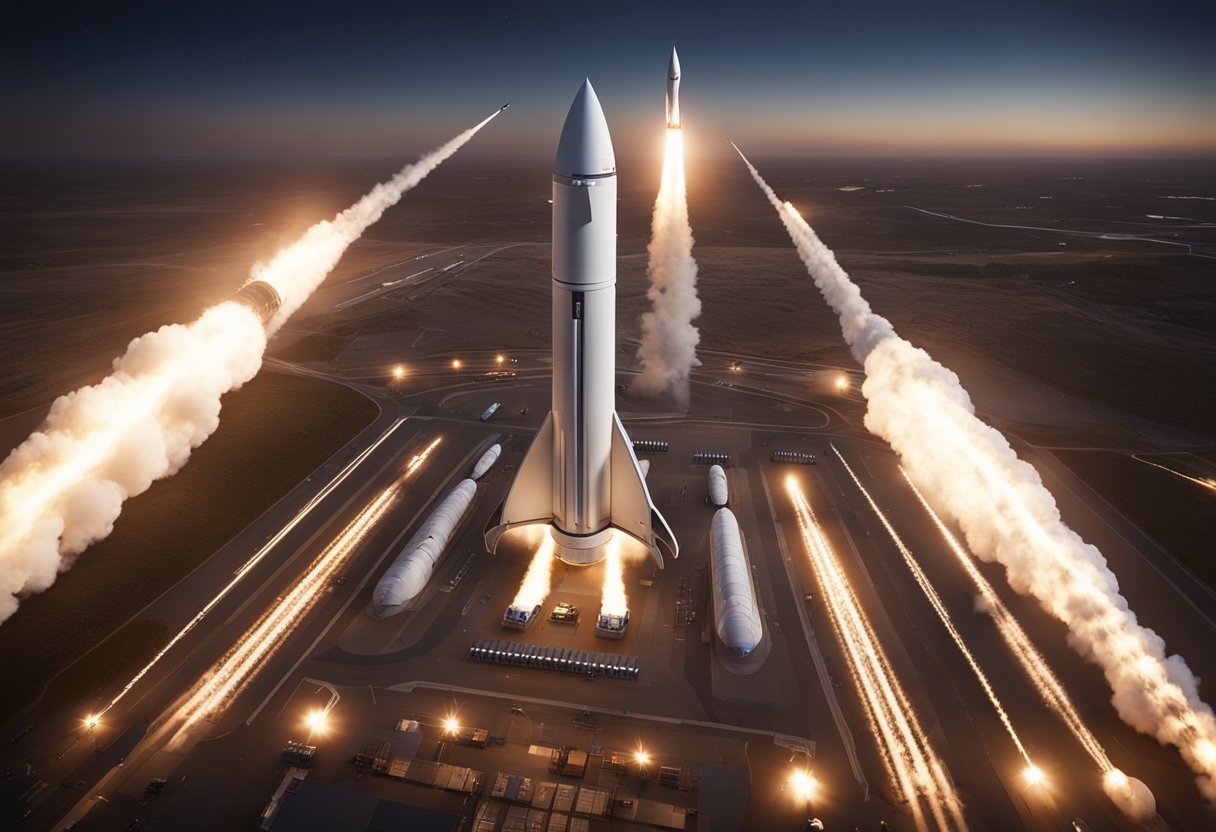
Space tourism is shifting from a mere fantasy to tangible reality. In recent times, we’ve witnessed significant milestones that showcase this progress.
2021: A pivotal year that saw the New Shepard rocket launch, carrying civilians including William Shatner, famously known as Captain Kirk from Star Trek, past the Kármán line—the boundary 100 kilometres above Earth’s sea level, which commonly defines the beginning of space.
Overview Effect: Those who cross the Kármán line reported experiencing the Overview Effect, a profound feeling of awe and unity with Earth.
Inspiration4 Mission: An all-civilian crew orbiting high above the International Space Station, conducting various scientific research endeavours.
2022:
Yusaku Maezawa: A Japanese entrepreneur who embarked on a 12-day journey to the International Space Station, a step toward his dearMoon project, where he plans to take artists around the Moon for inspiration.
Russian Film Crew: A director and actress filmed scenes for a movie aboard the ISS, a first in cinematic history.
As we forge ahead, the prospect of orbital holidays and even lunar tourism is becoming less a matter of if and more a question of when. SpaceVoyageVentures.com is among the vanguards in this arena, documenting the nascent stages of what promises to be a burgeoning cosmic frontier.
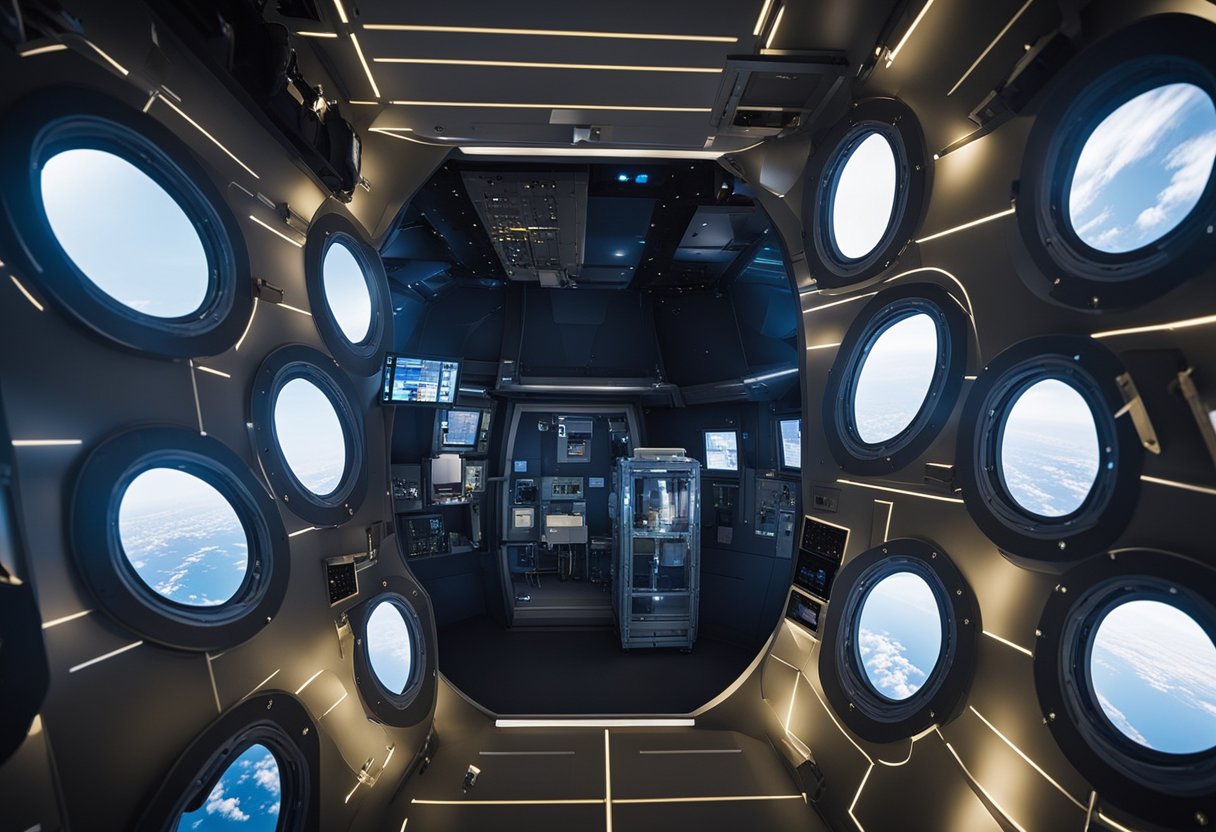
In the burgeoning field of space tourism, regulatory compliance and safety of passengers are paramount. We focus on ensuring adherence to the stringent guidelines set out by key agencies like the Federal Aviation Administration (FAA) and the Fédération Aéronautique Internationale (FAI), both of which play a critical role in shaping the standards for commercial spaceflight.
FAA Regulations
FAI’s Involvement
Our operational protocols encompass:
At SpaceVoyageVentures.com, we understand the importance of these regulations not just for legal compliance but for the assurance of safety and reliability in space tourism. Our commitment to achieving and maintaining these standards reflects in every step of our planning and operational processes.
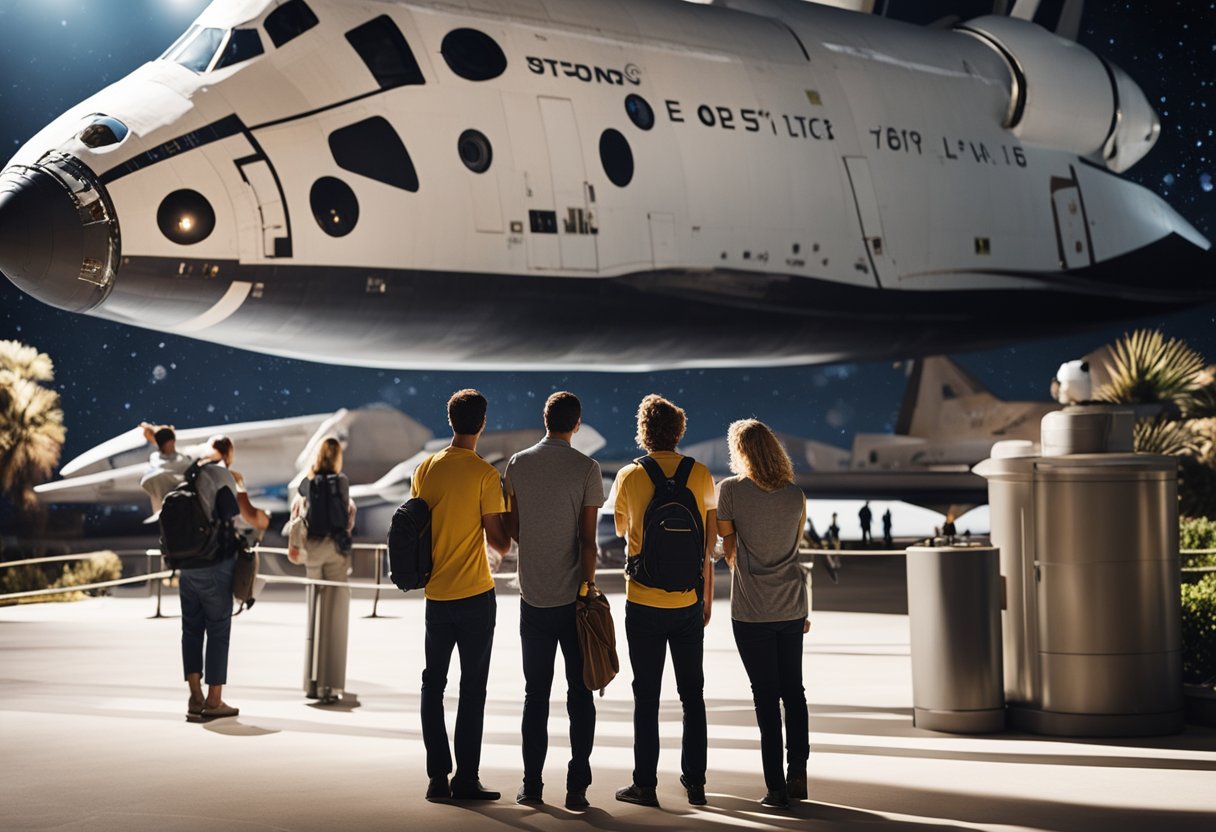
In the realm of space tourism, we ensure that the experiences of our customers are paramount, and their expectations are not only met but exceeded through meticulous planning and a deep understanding of the journey ahead.
Every journey we facilitate through SpaceVoyageVentures.com is carefully curated to offer an unparalleled experience. From the moment customers embark on their space tourism adventure, the sequence of events is planned for optimal comfort and engagement. Each step, from pre-flight training to the ascendancy beyond Earth’s atmosphere, is designed to ensure safety and instil confidence in our space tourists, making the journey as exhilarating as it is groundbreaking.
Experiencing weightlessness is a highlight for our private astronauts. In the controlled environment of our spacecraft, tourists can safely and fully enjoy the sensation of zero gravity. Pre-flight training incorporates sessions that help our clients adapt to these conditions, ensuring that the experience is both enjoyable and memorable. We also provide on-board guidance to elevate their understanding and comfort during these moments of weightlessness.
We also take pride in our private passenger accommodations. Privacy is of the utmost importance for our space tourists, and we offer private modules for those who wish for solitude to reflect on the breathtaking vistas of space. Each private space is designed with the utmost attention to personal comfort and includes state-of-the-art amenities tailored to the unique experience of living in a microgravity environment.
The meticulous responsiveness to customer expectations across all facets of the journey underscores our commitment to delivering an extraordinary space tourism experience.
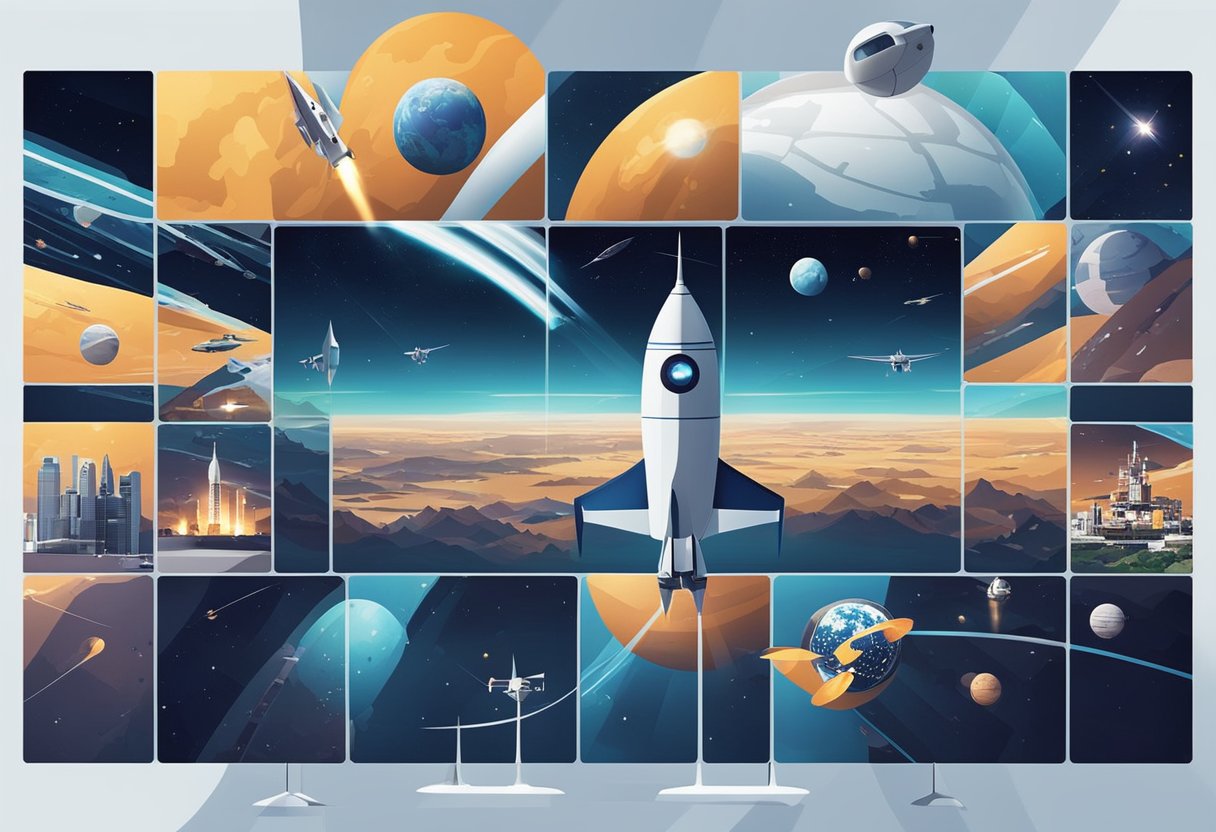
Space tourism is an emerging sector within the travel industry, and as such, pricing is an area of significant interest and variability. We observe a number of factors influencing the cost for potential space tourists.
Influencing Factors:
Here, we provide a brief breakdown of pricing for suborbital and orbital flights, with details on the contributing aspects.
Suborbital Flights:
Orbital Flights:
Market Dynamics:
Tourism is typically market-driven, and space tourism follows this principle but at a heightened level of cost due to its infancy and complexity.
Our queries at SpaceVoyageVentures.com indicate that as the market matures and technologies advance, we might expect reductions in price, rendering space tourism more accessible to a broader audience. However, these adjustments will take time and are dependent on the pace of technological and regulatory milestones.
In summary, the pricing dynamics in space tourism are currently characterised by their high cost. Yet, we anticipate a gradual change as the industry scales and consumer interest evolves.
In the burgeoning sector of space tourism, commercial partnerships are pivotal. We at SpaceVoyageVentures.com have noted several key alliances that signal the industry’s maturation and growing investment potential.
Firstly, NASA has been instrumental in fostering private-sector involvement through their Commercial Crew Program. This initiative has seen pivotal partnerships with companies like Boeing, offering expertise in aerospace development to further space exploration and tourism goals. Such collaboration underlines the interdependence of governmental agencies and private enterprises in advancing the space tourism frontier.
In parallel, Boeing’s investment in space tourism extends to their alignment with NASA’s Artemis program. Our emphasis is on the impact this has in terms of technological advancements and financial commitments, both of which are necessary to propel the space tourism industry.
Moving across the Atlantic, European involvement remains significant, with various enterprises contributing to the space tourism ecosystem. The European Space Agency’s engagement with commercial partners reinforces a global collaboration ethos.
When discussing financial investments, firms like UBS have projected the space tourism market could value up to $4 billion by 2030. These valuations reflect confidence in the sector’s potential for rapid growth and high investment yields, as the cost of space travel continues to trend downwards.
Partnerships
Investments
Our continual documentation at our website ensures we remain at the forefront of detailing these developments, offering keen insights into the opportunities these partnerships and investments present to potential investors and enthusiasts alike.

In the burgeoning field of space tourism, multiple market segments are taking shape. We’re observing novel experiences beyond the typical rocket launch, catering to a broad spectrum of intrepid travellers.
Suborbital Flights
Suborbital flights offer a brief foray into the edge of space, allowing passengers to experience a few minutes of weightlessness.
Orbital Excursions
A step beyond are orbital excursions that involve longer stays aboard space stations, with more extensive preparations.
Lunar Expeditions
Aspirational ventures are even looking towards lunar expeditions with promises of walking the lunar surface.
Balloon-Based Journeys
A relatively nascent niche is balloon-based journeys to the edge of space. Companies like Zero2Infinity and Space Perspective are leveraging helium balloons for a gentler ascent to the stratosphere. This segment stands out for its tranquillity and extended viewing times within the comfort of a pressurised capsule.
We find helium-filled balloon trips appealing for their lower risk profile and modest training requirements. These ventures promise to open the beauty of space to a wider audience by offering a serene experience at the brink of space. Such options have been documented on early trailblazer sites like SpaceVoyageVentures.com, suggesting a near-future availability.
| Segment | Key Player | Experience | Altitude Reached |
|---|---|---|---|
| Balloon-Based Journeys | Zero2Infinity | Serene, Long Viewing | Stratosphere |
| Balloon-Based Journeys | Space Perspective | Tranquil Ascent | Edge of Space |
We keep a close eye on these developments, understanding that today’s emerging segments might define tomorrow’s mainstream space travel experiences.
As we look to the skies, we see that the age of space tourism is on a swift ascent. Reservations for such unprecedented trips are becoming a reality for those with a zeal for adventure and the means to fund it. At SpaceVoyageVentures.com, we document the spectrum of space excursions, from those already gracing the stars to those on the cusp of being available.
Our detailed list provides a glimpse into the variety of options available:
| Flight Provider | Destination | Status |
|---|---|---|
| Blue Origin | Suborbital | Available |
| SpaceX | LEO & beyond | Available |
| Virgin Galactic | Suborbital | Available |
| World View | Stratosphere | Reservations opening soon |
World View is particularly pioneering, combining the thrill of space with the comfort of luxury. Their voyages will cater to those eager to experience the curvature of Earth without venturing into full orbit.
Stay abreast of the latest developments in space travel through our website, where we stay updated with the most credible information. As agents of this era’s most daring travel frontier, we witness the melding of boundless curiosity with stellar innovation.
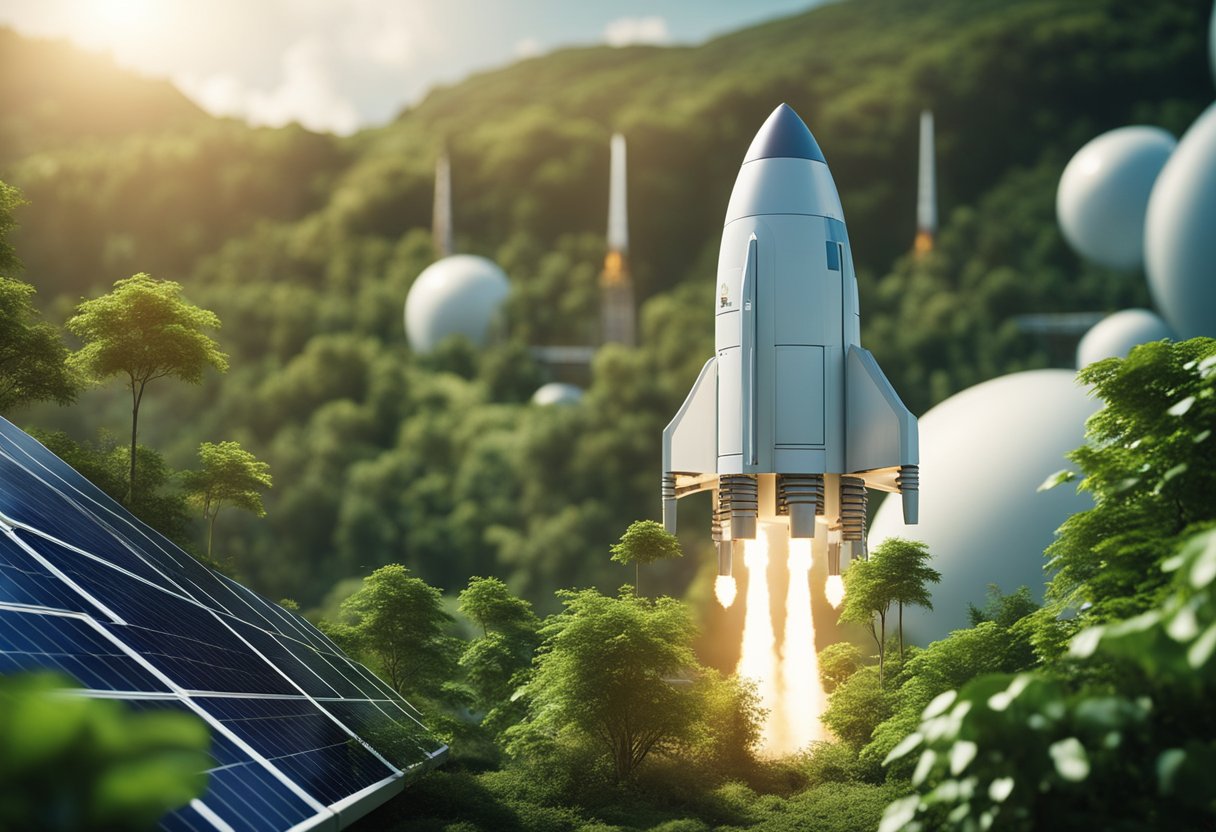
As authorities in the field, we recognise the importance of sustainability in the burgeoning space tourism industry. Companies like SpaceX, Blue Origin, and Virgin Galactic are at the forefront, offering or developing suborbital flights that could redefine human access to space. Yet, as we advance, the question of environmental impact and sustainability becomes paramount.
Key Considerations:
SpaceX, for instance, utilises reusable rockets, which is a step towards reducing the ecological footprint of each launch. The same aim guides Blue Origin, with their New Shepard suborbital system designed for multiple flights.
VSS Unity, Virgin Galactic’s spaceplane, demonstrates a unique approach to suborbital flight, gliding back to Earth post-launch, which potentially lessens the environmental impact compared to traditional rocket re-entry methods.
Suborbital Missions and Environmental Impact:
Within our space tourism documentation effort at SpaceVoyageVentures.com, we are committed to charting the path towards a responsible space tourism sector. We highlight ventures that push the envelope of what’s currently possible, as well as future experiences, with a significant focus on their environmental strategies and benchmarks. Our approach is rooted in the steadfast belief that space exploration should harmonise with our planetary stewardship.
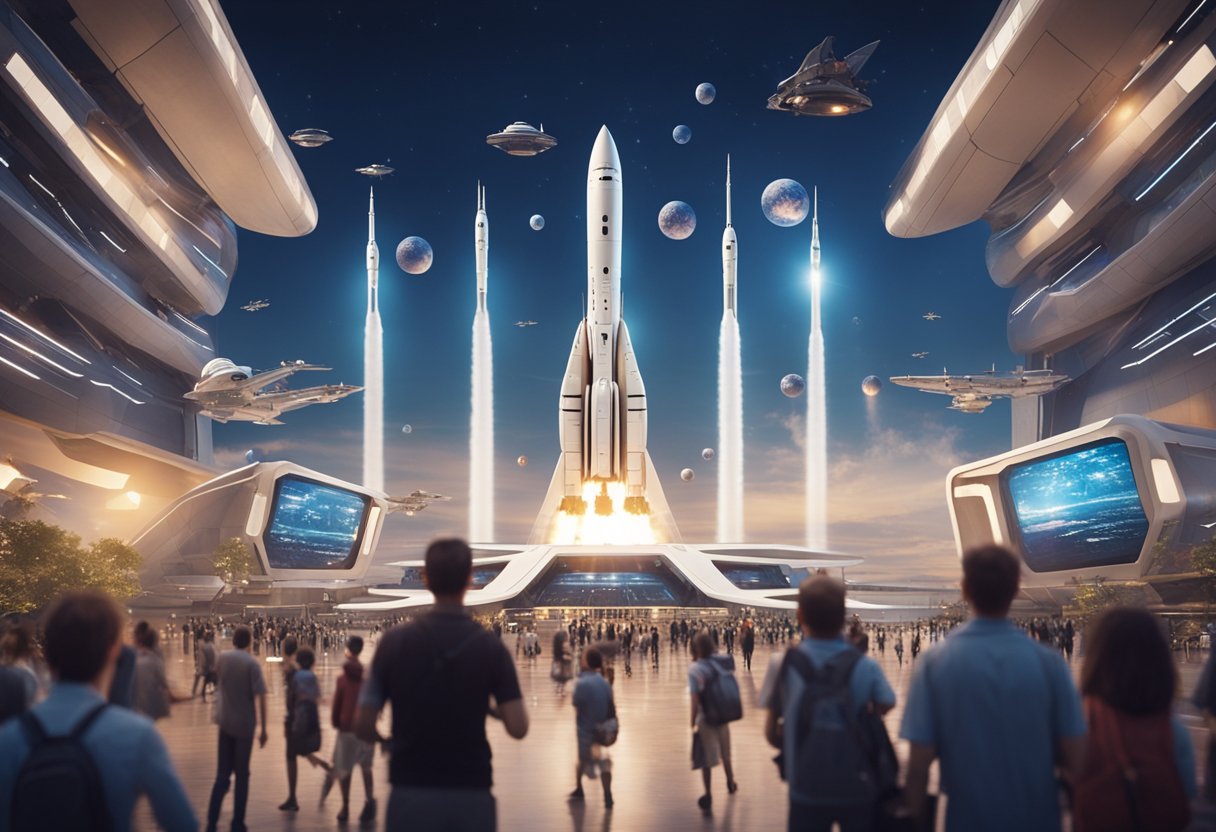
We’ve compiled the most common questions about space tourism, focusing on experiences, investment costs, industry leaders, future developments, available experiences, and the number of companies involved.
Space tourism offers civilians the opportunity to experience space, which historically was reserved for astronauts. Travel duration varies, ranging from a few minutes of weightlessness on suborbital flights to several days for orbital trips.
Costs for a spaceflight experience can be substantial, generally starting in the hundreds of thousands of pounds. Prices depend on the company and the type of journey one opts for, whether suborbital or orbital.
Companies like Blue Origin, Virgin Galactic, and SpaceX are at the forefront, having developed technologies to facilitate commercial space travel.
We can anticipate decreases in travel costs and the introduction of longer missions, like trips around the moon or visits to private space stations, making the prospect more accessible.
Each company has its unique offerings: Virgin Galactic operates a spaceplane for suborbital experiences, Blue Origin uses a rocket and capsule for short trips, while SpaceX plans to offer longer orbital flights.
A multitude of firms are working in this burgeoning sector, with at least six companies actively developing or offering space travel services, suggesting a dynamic and growing industry keen on facilitating off-world adventures for civilians.